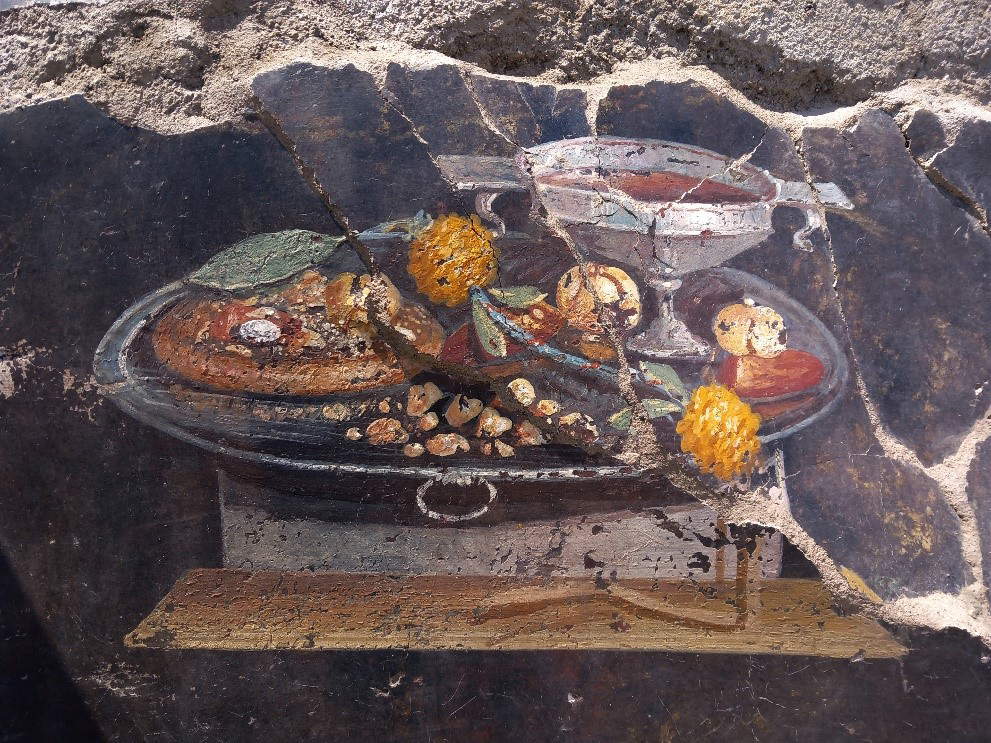Indiana Jones and the Cursed Pizza
I read with sympathy Alberto Angela’s recent interview in which he recounted his meeting with Harrison Ford on the occasion of the release of the latest chapter in the Indiana Jones saga, Indiana Jones and the Dial of Destiny. In Repubblica, the national Alberto said, "I wanted so much to meet him: for anyone my age, who is involved in history, who loves adventure, Indiana JonesHarrison Ford is a symbol, he trained generations of archaeologists. I’m younger than Angela, I’m from ’79 and I’m not an archaeologist, however, I don’t deny that I was introduced to ancient history, with children’s picture books, after seeing Raiders of the Lost Ark on TV: I was about 10 years old and I don’t think I was an isolated case. Then, as I grew older, I discovered that in the real world there were in the past archaeologists with adventurous lives such as Heinrich Schliemann, Hiram Bingham, Antonio Raimondi, Howard Carter, and in recent times men who not discovered but protected ancient works in out-of-the-ordinary ways, such as the Monuments Man or Rodolfo Siviero.
Nevertheless, their lives and stories all pale in comparison to the exploits of the intrepid Indiana. Needless to add, except to disappoint the expectations of some clueless dreamer, that for thousands of archaeologists life is anything but adventurous, and of adrenaline-fueled pursuits and incredible discoveries not even a distant shadow. So what do we do? Would we have preferred that before the airing of each film a notice be placed such as, “WARNING; the life of an archaeologist is not so adventurous,” killing the dreams of generations of children? We at Finestre Sull’Arte are quite bacchettoni, and often from these pages we have been fleecing Alberto Angela’s programs, pointing out inaccuracies and historical inaccuracies, however, let’s be clear: long live Alberto who with his programs allows us to discover the most beautiful and least known Italy with its wonders, and bravo to him who manages to enthuse millions of Italians. And bravo also to those who manage the communication of the Archaeological Park of Pompeii, who manage to make the attention always high for a unique site in the world, full of wonders.
Let’s be clear, every now and then they exaggerate as well, and even on this we are present and precise in pointing it out to them, so much so that we have even spoken on more than one occasion of “ridiculous discoveries,” such as that of the thermopolis discovered in 2019, given that several similar structures are known in Pompeii, or to the discovery of the remains of two ancient Pompeians swept away by the eruption of Vesuvius in 2020, as if it were who knows what news.
Today, however, it is the turn of a discovery that while not exceptional, since similar images were already known, is still less customary than the others, and will help broaden our knowledge of the images known as xenia (literally “hospitable gifts”), the small paintings with still lifes that decorated the guest rooms in Pompeian dwellings, according to a Greek custom. So you may have guessed that today is the turn of pizza, or rather thatfresco depicting a still life resembling a pizza.

A great uproar and a lot of controversy, but this time, however, we feel like breaking a lance in favor of the communication office of the Archaeological Park of Pompeii where, to be fair, they merely wrote that “the still life looks like a pizza” and not that “a fresco depicting a pizza has been found.” In addition to this, it must be said that in the scientific article published in the margins of the discovery, and made easily accessible to journalists, Alessandro Russo and Gabriel Zuchtriegel, authors of the paper, using the word “pizza” only to give a suggestion to a non-expert reader: “to the eyes of a modern observer it might look like a pizza, although to speak of pizza in modern terms,” they write, “makes no sense, since one would risk forcing a contemporary concept to the point of arbitrariness.”
We, who unfortunately are a fairly serious magazine that caters to a less generalist audience, did not speak of pizza but of a “still life,” adding “supposedly depicting a focaccia.” We chose not to put the word “pizza” in the title, nor to use it anywhere in the text (except in the quotation mark of the director Gabriel Zuchtriegel, who spoke in the first person about “pizza” in official statements), because we felt it was an obvious stretch even though we knew that we would undoubtedly make the title less catchy.
However, probably to be even stricter we should also have avoided the word “flatbread” since, for some, the flatbread/pizza would appear to be a simple earthenware dish, and thus titular: “Fresco with still life found in Pompeii.” Here, if that were the case, how many would have read the news besides the insiders?
So, if we want to reach and enthuse more people about the world of art, heritage and its beauty, we must strive to strike the right balance between rigor and levity. Let us remember who and what brought us to the world of art: perhaps an Indiana Jones movie, an Alberto Angela documentary, a Clive Cussler novel, a vacation in Mykonos. Goody-goody yes, but without overdoing it! And as the blonde Vulvia would say, “Pizza, flatbread, or crock pot? The scientific community wonders. Only on Rieducational Channel!”
Warning: the translation into English of the original Italian article was created using automatic tools. We undertake to review all articles, but we do not guarantee the total absence of inaccuracies in the translation due to the program. You can find the original by clicking on the ITA button. If you find any mistake,please contact us.



























